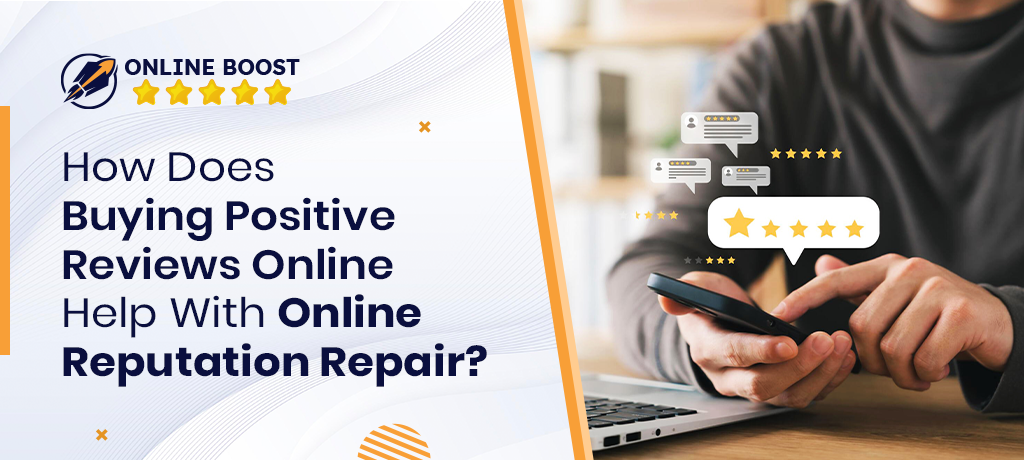
Trust takes years to build, seconds to break, and forever to repair.
Today, trust is what decides whether people choose your brand or scroll right past it. Every single day, people read reviews online before buying anything, and most of them check a company’s social media right after.
That’s where reviews and social media management start working together. They’re not separate anymore.
When someone looks you up, they want proof and personality. Reviews give them the proof that your brand delivers what it promises. Social media gives them the personality that makes your brand human.
Studies show that over 90% of U.S. consumers read online reviews before buying, and more than 70% expect brands to respond quickly on social media.
If you take a closer look, it’s really about human behavior. People trust people like them. When they see real customers sharing honest experiences, they feel safe. When they see a brand replying, listening, and fixing problems, they feel respected. That’s what builds authority.
Let’s discuss how customer reviews and social media actually work together to create that kind of trust.
What Brand Authority Means
Brand authority means people trust what you say and believe you know what you’re talking about. It’s when your audience sees your brand as reliable, experienced, and worth listening to. When someone thinks, “If they said it, it must be true,” that’s brand authority.
You can’t buy authority. You earn it over time through honest communication, good service, and consistent results. Every post you make, every comment you answer, and every review you receive plays a part in shaping it. When people keep seeing positive customer reviews and social media activity, they begin to view your brand as credible. It builds trust and authority.
How Audiences and Algorithms Evaluate Authority
It’s not just people who notice your reputation. Algorithms do too.
How people judge authority
Your audience looks for small signs that tell them if you’re trustworthy:
- Do other people recommend you in their reviews online?
- Do you reply when someone leaves a comment or complaint?
- Is your tone friendly and consistent on your social pages?
- Do your posts teach, help, or inspire instead of just sell?
How algorithms judge authority
Search engines and social platforms look for similar things, just in a technical way. They watch:
- How many people talk about your brand
- How often does your name appear in positive review management sites
- How much engagement do your posts get on social media marketing platforms
- How do visitors interact with your content, and do they stay or leave right away?
The more consistent and positive signals you send, the stronger your authority looks both to people and to algorithms. And when both trust you, your visibility grows fast.
Role of Reviews in Building Authority
Now that we know what brand authority really means, let’s talk about one of the biggest things that creates it: reviews.
So, how do reviews actually help build authority?
Create Trust
Trust is the first thing reviews create. When someone sees honest feedback from real customers, they feel safer about choosing your brand. Good reviews make them think, “Others tried this, and it worked for them.” That simple thought removes doubt. This emotional reassurance is where authority begins.
Show Reliability
Authority doesn’t come from a single good experience; it comes from consistency. When customers keep leaving positive feedback over time, it shows your brand is reliable. It means you don’t just get it right once; you get it right often. Good review management also plays a big role here.
Shape Public Perception
Every review, good or bad, helps shape how people see your brand. It’s part of your brand reputation management. When new visitors read a mix of honest opinions and see how you respond, they get a real picture of who you are. Even a negative review can help if handled well.
Influence Visibility
It’s not only people who pay attention to reviews; algorithms do too. Search engines and social platforms track how often your brand gets reviewed, what people say, and how recently those reviews were posted. Consistent, positive activity signals that your brand is active, relevant, and trusted.
Create Authentic Content
Reviews are stories from real people. They talk about what worked, what they loved, and why they’d recommend your brand. Sharing these stories on your social media platforms gives your audience something more believable than polished ads.
Drive Improvement and Growth
The final role reviews play is helping your brand grow. They highlight what customers love and where you can improve. When you take that feedback seriously and make visible changes, it shows that your brand listens.
Role of Social Media Management in Building Authority
If reviews show what people say about you, social media shows how you respond, communicate, and stay present. Social media is no longer just a place to post updates or promotions. It is where people decide if they like your brand enough to follow, engage, and eventually buy from you.
So, how social media helps build brand authority in a lasting way.
Builds Connection and Familiarity
Authority starts with connection. When people see your posts, stories, or replies, they start to recognize your tone, your values, and your personality. Familiarity builds comfort, and comfort leads to trust. Strong social media management makes this happen naturally.
Shows Transparency and Human Side
People trust brands that act like humans. Social media gives you the space to do exactly that. Sharing behind-the-scenes content, team stories, or customer highlights makes your brand more relatable.
When customers see you reply to comments or address complaints openly, it sends a clear signal that you have nothing to hide. This level of transparency gives you real authority.
Strengthens Brand Consistency
Consistency is one of the main pillars of authority. Posting regularly, using the same tone and visual style, and maintaining a clear message across platforms helps people remember you. It tells them your brand is active and dependable.
Creates a Space for Engagement
Authority grows stronger when you engage with people. Answering questions, joining conversations, and appreciating followers' comments show that you listen.
These interactions make your social media services meaningful, and they turn casual followers into loyal supporters.
Supports Your Review Strategy
Social media and reviews work together. When you respond to comments or DMs, you can guide satisfied customers to share their experiences on public review platforms. You can also share strong reviews as social content to reinforce your credibility.
How Reviews and Social Media Work Together
By now, you know that reviews build credibility and social media builds connections. When you bring both together, they multiply each other's impact. That combination is what turns a good reputation into real authority.
But how can you make reviews and social media work together in a simple and effective way?
Share Reviews as Social Proof
The easiest way to connect these two is by sharing your best reviews on your social channels. Take a real customer comment, add a simple graphic or a short caption, and post it. You can do this on Instagram, Facebook, LinkedIn, or even stories and reels.
For example, a local café can share a short post saying, “Thanks to Emily for the kind words about our weekend brunch. We’re happy you loved it!” This not only promotes your food but also shows that your customers enjoy it enough to talk about it.
Encourage Reviews Through Social Engagement
Your social media audience already interacts with you. They like, comment, and share your posts. Why not invite them to leave reviews too?
You can create a post that says, “Tried our new service? Tell us what you think on Google or Yelp, your feedback helps us improve.” Keep it friendly and simple. People who already like your brand are the most likely to share positive reviews.
Use Feedback to Shape Your Content
Reviews are full of ideas for your content. You can find what customers love most and highlight those points in your posts. You can also take a review that mentions a specific benefit and create a short video or story around it.
For example, if someone writes, “The support team was quick and helpful,” make a post that shows how your team handles customer care. This helps your followers see that your reviews are not just words; they reflect real experiences.
Respond and React in Public
When someone tags your brand or mentions a great experience on social media, reply quickly and warmly. It shows you’re listening and you care. The same goes for a review that needs attention. If you fix a customer’s problem, thank them for pointing it out and share the outcome if appropriate.
Create a Cycle Between the Two
Reviews and social media are parts of one system. Reviews create the content. Social media spreads it. That attention brings in new customers who later leave more reviews. And the cycle continues.
You can even include short links to your review pages in your bio, captions, or stories, which makes it easy for followers to share their experience.
For Example:
Imagine a small skincare brand that gets a five-star review saying, “My skin cleared up in two weeks after using their moisturizer.” The brand can turn that into a short Instagram post with the customer’s quote, a photo of the product, and a caption that thanks the reviewer.
In the comments, they could ask, “Have you tried this product yet? Tell us your experience!”
That one action does three things:
- It highlights real results (reviews build proof).
- It shows active engagement (social media builds connections).
- It invites more feedback (authority grows).
Strategies to Combine
| Step | Review Side | Social Media Side | Integration Activity |
|---|---|---|---|
|
1 |
Collect review (via email, link, etc.) |
Post customer story on social |
Use a review excerpt and a photo, and make a social post |
|
2 |
Monitor new reviews & sentiment |
Monitor mentions/DMs/social comments |
Feed review insights into the social content calendar |
|
3 |
Respond to reviews publicly |
Capture comment thread, share best replies |
Show behind-the-scenes of how you handle feedback |
|
4 |
Encourage new reviews |
Create social CTAs for reviews (“Tell us how we did”) |
Link social CTA to the review platform |
|
5 |
Analyze metrics (review volume, sentiment) |
Analyze social metrics (engagement, shares, mentions) |
Combine insights into the dashboard: authority growth |
Tools and Platforms to Support Integration
These platforms help you keep track of feedback, schedule posts, respond faster, and see how your brand is performing.
| Category | Popular Tools and Platforms |
|---|---|
|
Review Management Tools |
Google Business Profile, Trustpilot, Yelp for Business, Birdeye, ReviewTrackers, Podium, Reputation.com |
|
Social Media Management Tools |
Hootsuite, Buffer, Sprout Social, Later, Zoho Social, Metricool, SocialPilot |
|
Integration and Monitoring Tools |
Zapier, HubSpot, Sprinklr, Loomly, Brandwatch, SEMrush |
How to Measure the Impact on Brand Authority and Adjust Strategy
You can’t improve what you don’t measure. When you track the right signals, you understand how your reviews and social media management are performing.
Track the Signals
Start with what your audience is saying and how often they say it. Keep an eye on:
- The number of reviews online you get each month
- Your average star rating
- The tone of the feedback (positive, neutral, or negative)
- How quickly and politely you respond
If your ratings are going up and people mention trust, quality, or service in their comments, that’s a clear sign your authority is improving.
Watch Engagement on Social Media
Authority also shows up in how people interact with you on social platforms. Check:
- Likes, comments, and shares on your posts
- Mentions and tags from followers
- Direct messages and replies
- The number of returning visitors or repeat commenters
If people are starting conversations or tagging friends, it means your social media marketing is building real community trust.
Look for Visibility Growth
When your reviews and social presence start working together, your reach grows naturally. Look at:
- Increases in search rankings for your brand name
- Higher traffic from social media to your website
- More branded searches on Google
- A rise in followers from organic engagement
All of this shows that more people are seeing you, talking about you, and trusting you.
Measure Reputation Health
Combine your data from both sides: reviews and social media. Create a simple monthly scorecard:
| Area | What to Track | Goal |
|---|---|---|
|
Reviews |
New reviews, average rating |
Maintain 4.5★+ |
|
Social Media |
Engagement rate, mentions |
Grow 10% monthly |
|
Visibility |
Branded searches, website traffic |
Increase by 15% quarterly |
|
Sentiment |
Positive vs. negative comments |
80% positive |
Adjust Your Strategy Based on What You Find
Once you understand what the numbers are saying, adjust your approach:
- If engagement drops, review your content style or posting frequency.
- If reviews slow down, ask for feedback more consistently.
- If negative comments increase, look for recurring problems and fix them fast.
- If your visibility is flat, test new post formats or partner with micro-influencers.
Common Challenges and How to Overcome Them
Even with a strong strategy, building authority through reviews and social media management comes with challenges as well.
Getting Consistent Reviews
Many brands struggle to collect reviews regularly. Customers are busy and rarely leave feedback unless asked. The problem is that without new reviews, your brand can start to look inactive.
How to fix it:
You can buy reviews online and also make asking for reviews a normal part of your process. Send a polite follow-up email after a purchase or service. Add review links in your thank-you messages or social media bios.
Handling Negative Feedback
Negative reviews can feel discouraging, but they are part of every real brand’s journey. Trying to avoid or delete them can do more harm than good.
How to fix it:
Respond calmly and respectfully. Acknowledge the issue, apologize if needed, and offer to make it right. When you handle criticism well, it shows accountability and earns more trust.
Staying Consistent on Social Media
It’s easy to start strong on social media and then slow down when things get busy. But irregular posting or inconsistent tone can weaken your authority.
How to fix it:
Create a simple posting plan. Use tools like Hootsuite or Buffer to schedule posts ahead of time. Keep your tone friendly and consistent across all channels.
Balancing Authenticity and Promotion
Some brands make their social content too promotional, while others avoid talking about their products completely. The balance between genuine storytelling and brand promotion can be tricky.
How to fix it:
Follow the 80/20 rule: 80% of your content should inform, entertain, or inspire, and 20% can promote your offers. Share customer reviews and social media posts that show real experiences instead of direct ads.
Managing Time and Resources
It can be tough to manage reviews, comments, and content creation all at once, especially for small teams.
How to fix it:
Automate what you can. Use tools and management dashboards to track everything in one place. Set daily or weekly time blocks for replies and reviews so nothing slips through.








































